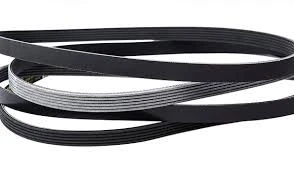- Arabic
- French
- Russian
- Spanish
- Portuguese
- Turkish
- Armenian
- English
- Albanian
- Amharic
- Azerbaijani
- Basque
- Belarusian
- Bengali
- Bosnian
- Bulgarian
- Catalan
- Cebuano
- Corsican
- Croatian
- Czech
- Danish
- Dutch
- Afrikaans
- Esperanto
- Estonian
- Finnish
- Frisian
- Galician
- Georgian
- German
- Greek
- Gujarati
- Haitian Creole
- hausa
- hawaiian
- Hebrew
- Hindi
- Miao
- Hungarian
- Icelandic
- igbo
- Indonesian
- irish
- Italian
- Japanese
- Javanese
- Kannada
- kazakh
- Khmer
- Rwandese
- Korean
- Kurdish
- Kyrgyz
- Lao
- Latin
- Latvian
- Lithuanian
- Luxembourgish
- Macedonian
- Malgashi
- Malay
- Malayalam
- Maltese
- Maori
- Marathi
- Mongolian
- Myanmar
- Nepali
- Norwegian
- Norwegian
- Occitan
- Pashto
- Persian
- Polish
- Punjabi
- Romanian
- Samoan
- Scottish Gaelic
- Serbian
- Sesotho
- Shona
- Sindhi
- Sinhala
- Slovak
- Slovenian
- Somali
- Sundanese
- Swahili
- Swedish
- Tagalog
- Tajik
- Tamil
- Tatar
- Telugu
- Thai
- Turkmen
- Ukrainian
- Urdu
- Uighur
- Uzbek
- Vietnamese
- Welsh
- Bantu
- Yiddish
- Yoruba
- Zulu
Oct . 02, 2024 15:37 Back to list
Understanding the Basics of Power Transmission Belts in Mechanical Systems
Understanding Power Transmission Belts An Essential Component in Mechanical Systems
Power transmission belts are integral components in various mechanical systems, serving as a critical means of transferring motion and energy from one part of a machine to another. These belts are commonly found in numerous applications ranging from automotive engines to industrial machinery. Their significance cannot be overstated, as they enhance efficiency, reduce energy consumption, and contribute to the overall reliability of the equipment in which they are used.
A power transmission belt operates on the simple principle of friction. When a belt loops around a pair of pulleys, the rotation of one pulley causes the belt to move, which in turn drives the connected pulley. This transfer of power enables machines to perform a wide array of functions, from simple conveyor systems to complex robotic arms. There are several types of power transmission belts, each designed for specific applications and conditions.
The most common types of power transmission belts include flat belts, V-belts, and timing belts. Flat belts are generally made from a single piece of flexible material and are ideal for applications where high-speed power transmission is required. They are often used in conveyor systems or agricultural machinery. V-belts, characterized by their trapezoidal cross-section, are designed to fit snugly into the grooves of pulleys. This design increases friction, thereby enhancing power transmission efficiency. V-belts are widely used in automotive engines and industrial equipment due to their reliability and compact design.
Timing belts, on the other hand, feature teeth that mesh with pulleys, ensuring precise timing between the driven and driving components. This feature is essential in applications where synchronization is critical, such as in engine timing systems and 3D printers. The use of timing belts helps maintain consistent performance and reduces the risk of slippage, ensuring that machinery operates smoothly.
power transmission belt

The materials used in manufacturing power transmission belts have also evolved significantly. Traditional belts were often made from leather or rubber, which, while effective, had limitations in terms of durability and resistance to environmental factors. Modern belts are typically made from composite materials, including synthetic rubber and other advanced polymers, which enhance their performance characteristics. These materials provide superior resistance to heat, chemicals, and wear, leading to longer lifespans and reduced maintenance needs.
In terms of installation and maintenance, power transmission belts require careful attention to ensure optimal performance. Proper tensioning is crucial, as both over-tightening and under-tightening can lead to premature wear or failure. Regular inspections are also recommended to identify signs of wear, such as fraying or cracking, which can compromise the efficiency of the system.
Furthermore, the design and layout of the belt system play a significant role in its effectiveness. Factors such as pulley alignment, diameter, and distance between pulleys must be carefully considered to ensure that the system operates efficiently. Misalignment can lead to uneven wear and increased friction, resulting in decreased power transmission efficiency and potentially damaging the belts and associated components.
In conclusion, power transmission belts are vital components that play a significant role in a myriad of mechanical systems. Understanding their types, materials, and maintenance requirements is essential for optimizing their performance and longevity. As technology continues to advance, we can expect to see further innovations in power transmission belt design, enhancing their effectiveness across countless applications. In industries ranging from automotive to manufacturing, these belts will undoubtedly continue to drive progress and efficiency.
-
Korean Auto Parts Timing Belt 24312-37500 For Hyundai/Kia
NewsMar.07,2025
-
7PK2300 90916-T2024 RIBBED BELT POLY V BELT PK BELT
NewsMar.07,2025
-
Chinese Auto Belt Factory 310-2M-22 For BMW/Mercedes-Benz
NewsMar.07,2025
-
Chinese Auto Belt Factory 310-2M-22 For BMW/Mercedes-Benz
NewsMar.07,2025
-
90916-02660 PK Belt 6PK1680 For Toyota
NewsMar.07,2025
-
drive belt serpentine belt
NewsMar.07,2025

